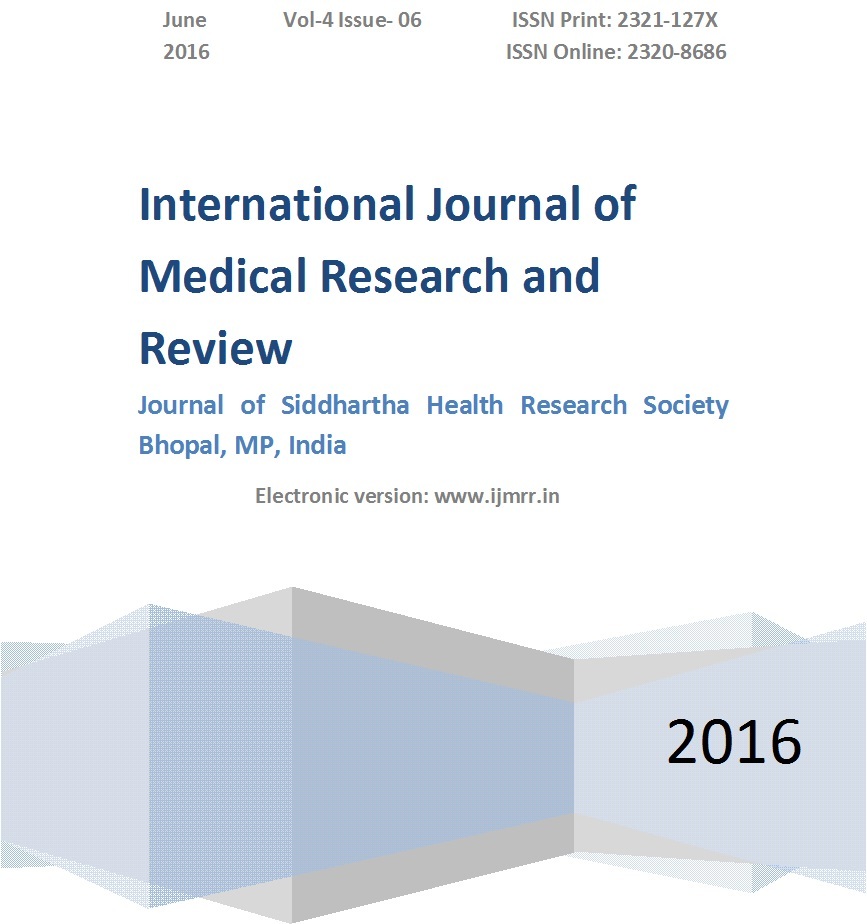To study the prevalence of cutaneous manifestationsin newborns and its correlation with defined maternal and neonatal factors
Abstract
Introduction: Newborn skin may look and feel different, depending on the gestational age. Skin manifestations are common in neonates and cause parental anxiety. Many of these are transient and physiological, but some may require further workup to rule out a more serious disorder. Hence, it is of utmost importance for pediatricians and dermatologist to recognize these physiological states in neonates.
Objectives: To study incidence of cutaneous manifestations in new born and its correlation with defined maternal and neonatal factors.
Material & Methods: Institution based, observational, cross sectional cohort study was conducted in Post natal ward of Dr. B.R.A.M. medical college, Raipur, C.G. Total 4000 neonates were taken in to study. All the neonates irrespective of gestation, up to 3 days of life were included in study, with or without significant maternal history. Detailed dermatological examination was conducted. Obtained data was analyzed by appropriate statistical method.
Observation: In all, we studied 18 skin lesions- Epstein pearl 3323 cases (83%), Mongolian spot 2828 cases (70.7%), milia 1344 cases (33.6%), sebaeceous gland hyperplasia 1237 cases (30.9%), erythema toxicum neonatorum 711 cases (17.8%), occipital alopecia 648 cases(16.2%), lanugo 575 cases (14.4%), icterus 548 cases(13.7%), physiological scaling 482 (12.1%), vernix caseosa 9.8%, acrocyanosis 8.6%, salmon patch 7.1%, miniature puberty 6.9%, caput succedaneum 1.6%.
Conclusion: In India, Epstein pearl and Mongolian spot are predominant skin lesions. Distribution profile of skin lesions is affected by interracial, environment and hormonal factors.
Downloads
References
2. Darmstadt GL, Dinulos JG. Neonatal skin care. Pediatr Clin North Am. 2000 Aug;47(4):757-82.
3. Avery’sNeonatology: Pathophysiology and management of the newborn,6 th edition South Asian edition Chp 55, pg 1485-1505 :Dermatologic conditions: James G.H. Dinulos and Gary L Darmstadt
4. Cetta F, Lambert GH, Ros SP. Newborn chemical exposure from over-the-counter skin care products. Clin Pediatr (Phila). 1991 May;30(5):286-9.
5. Holbrook KA, Smith LT, Elias S. Prenatal diagnosis of genetic skin disease using fetal skin biopsy samples. Arch Dermatol. 1993 Nov;129(11):1437-54.
6. Sybert VP, Holbrook KA, Levy M. Prenatal diagnosis of severe dermatologic diseases. Adv Dermatol. 1992;7:179-209; discussion 210.
7. Hoeger PH, Schreiner V, Klaassen IA, Enzmann CC, Friedrichs K, Bleck O. Epidermal barrier lipids in human vernix caseosa: corresponding ceramide pattern in vernix and fetal skin. Br J Dermatol. 2002 Feb;146(2):194-201.
8. Dohil MA, Baugh WP, Eichenfield LF. Vascular and pigmented birthmarks. Pediatr Clin North Am. 2000 Aug;47(4):783-812, v-vi.
9. PACHMAN DJ. Massive hemorrhage in the scalp of the newborn infant: hemorrhagic caput succedaneum. Pediatrics. 1962 Jun;29:907-10.
10. Haveri FT, Inamadar AC. A cross-sectional prospective study of cutaneous lesions in newborn. ISRN Dermatol. 2014 Jan 20;2014:360590. doi: 10.1155/2014/360590. eCollection 2014.
11. Sachdeva M, Kaur S, Nagpal M, Dewan SP. Cutaneous lesions in new born. Indian J Dermatol Venereol Leprol. 2002 Nov-Dec;68(6):334-7.
12. Nanda A, Kaur S, Bhakoo ON, Dhall K. Survey of cutaneous lesions in Indian newborns. Pediatr Dermatol. 1989 Mar;6(1):39-42.
13. Moosavi Z, Hosseini T. One-year survey of cutaneous lesions in 1000 consecutive Iranian newborns. Pediatr Dermatol. 2006 Jan-Feb;23(1):61-3.
14. Gokdemir G, Erdogan HK, Köşlü A, Baksu B. Cutaneous lesions in Turkish neonates born in a teaching hospital. Indian J Dermatol Venereol Leprol. 2009 Nov-Dec;75(6):638. doi: 10.4103/0378-6323.57742.
15. Dash K, Grover S, Radhakrishnan S, Vani M. Clinico epidemiological study of cutaneous manifestations in the neonate. Indian J Dermatol Venereol Leprol. 2000 Jan-Feb;66(1):26-8
16. Hidano A, Purwoko R, Jitsukawa K,:Stastical survey of skin changes in Japanese neonates; Pediatric Dermatology :3(2),pp 140-144,1986
17. Shih IH, Lin JY, Chen CH, Hong HS:A birthmark survey in 500 newborn : clinical observation in two northern Taiwan medical centre nurseries “Chang Gung Medical Journal ,vol 30,no 3,pp 220- 225,2007.
18. Ferahabas A, AkcakusM,Gunes T, Mistik S:Prevalence of cutaneous findings in hospitalized Neonates: A Prospective Observational Study; Pediatric Dermatology:26(2):139-142;2009
19. Kahana M, Feldman M, Abudi Z, Yurman S. The incidence of birthmarks in Israeli neonates. Int J Dermatol. 1995 Oct;34(10):704-6.
20. Rivers JK, Frederiksen PC, Dibdin C. A prevalence survey of dermatoses in the Australian neonate. J Am Acad Dermatol. 1990 Jul;23(1):77-81.
21. Jacobs AH, Walton RG. The incidence of birthmarks in the neonate. Pediatrics. 1976 Aug;58(2):218-22.
22. Osburn K, Schosser RH, Everett MA. Congenital pigmented and vascular lesions in newborn infants. J Am Acad Dermatol. 1987 Apr;16(4):788-92.
23. Lau JT, Ching RM. Mongolian spots in Chinese children. Am J Dis Child. 1982 Sep;136(9):863-4.
24. Shajari H, ShajariA,Sajadian N, Habiby M: The incidence of birthmarks in Iranian neonates “ActaMedicaIranica” vol 45,pp 424-426,2007
25. PruksachatkunakomC,Duarte AM, Schanchner LA : Skin lesions in newborns; International Pediatrics vol14,no 1,pp 28-31,1999
26. DahiyatKA :Neonatal skin lesions in Jordan Study of consecutive 500 neonates at King Hussain Medical centre ,Calicut Medical Journal:4(4) article el ,2006
27. NobbayB,Chakrabarty N, Cutaneous manifestations in the newborn. Indian J DermatolVenereolLeprol 1992;58:69-72.
28. Karvonen SL, Vaajalahti P, Marenk M, Janas M, Kuokkanen K. Birthmarks in 4346 Finnish newborns. Acta Derm Venereol. 1992;72(1):55-7.
29. El-Moneim AA, El-Dawela RE. Survey of skin disorders in newborns: clinical observation in an Egyptian medical centre nursery. East Mediterr Health J. 2012 Jan;18(1):49-55.
30. Chaithirayanon S, Chunharas A. A survey of birthmarks and cutaneous skin lesions in newborns. J Med Assoc Thai. 2013 Jan;96 Suppl 1:S49-53.
31. Kanada KN, MerinMR,Munden A, Friedlander SF:A Prospective study of cutaneous findings in newborn in the US: correlatioin with race ,ethnicity, and gestational status using updated classification and nomenclature:J Pediatr.2012 Aug;161(2):240-5.



 OAI - Open Archives Initiative
OAI - Open Archives Initiative


